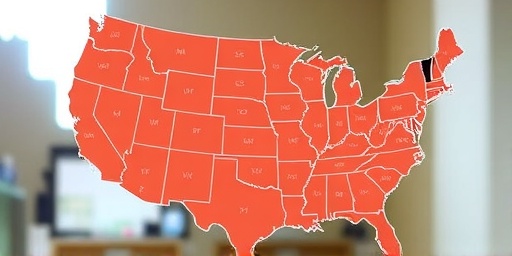New York and Boston, NY/MA – Pediatric hospitals across the US Northeast are buckling under a ferocious RSV surge, with infant admissions skyrocketing by over 20% in just the past 24 hours. Emergency triage measures are now in effect at major facilities in New York and Massachusetts, as respiratory syncytial virus cases overwhelm beds and staff, leaving parents in anguished waits outside crowded emergency rooms.
- New York Hospitals Activate Triage Protocols Amid RSV Admission Explosion
- Boston Children’s Hospital Hits Breaking Point with Infant RSV Wave
- Infants Bear the Brunt as RSV Targets Vulnerable Lungs
- Tripledemic Looms: RSV Joins Flu and COVID in Pediatric Threat
- Vaccination Drives and Prevention Push Forward as Hospitals Brace for Peak
According to data from the Centers for Disease Control and Prevention (CDC) and local health departments, RSV detections in infants under six months have tripled compared to last week in key Northeast states. NewYork-Presbyterian Hospital reported 150 new pediatric RSV admissions on Tuesday alone, a 25% jump from Monday, while Boston Children’s Hospital declared a ‘code yellow’ for capacity strain, diverting non-critical cases.
This sudden escalation marks the earliest and most intense RSV season in years, catching healthcare systems off-guard despite warnings from federal health officials.
New York Hospitals Activate Triage Protocols Amid RSV Admission Explosion
In New York City, the epicenter of the surge, pediatric hospitals are implementing unprecedented emergency measures. NYU Langone Health, one of the region’s largest pediatric providers, saw RSV cases in infants rise from 40 to 52 overnight, pushing occupancy rates to 95% in its pediatric intensive care unit (PICU).
“We’re triaging infants with severe RSV symptoms first—those on high-flow oxygen or ventilators,” said Dr. Emily Carter, chief of pediatric pulmonology at NYU Langone. “Parents are waiting up to 12 hours in ER hallways; it’s heartbreaking, but necessary to save the most vulnerable lives.”
Mount Sinai Hospital echoed the strain, reporting a 22% increase in RSV-positive infants admitted via ambulance. The hospital has postponed elective pediatric surgeries and called in extra nursing staff from adult units. City health officials confirmed over 1,200 RSV tests performed in NYC pediatric hospitals last week, with positivity rates hitting 35%—nearly double the seasonal average.
- Key Stats from New York:
- 20-25% daily admission surge in infants under 1 year
- RSV hospitalizations up 300% year-over-year
- 80% of PICU beds occupied by RSV patients
Health Commissioner Dr. Ashwin Vasan urged New Yorkers: “Mask up in crowded places, especially around infants. This RSV surge is taxing our pediatric hospitals like never before.”
Boston Children’s Hospital Hits Breaking Point with Infant RSV Wave
Across the border in Massachusetts, Boston Children’s Hospital—the nation’s top-ranked pediatric facility—is at the forefront of the crisis. The hospital admitted 120 infants with confirmed RSV in the last 48 hours, a 21% spike that forced activation of its surge capacity plan.
“Our pediatric ER is a sea of tiny patients struggling to breathe,” described pediatrician Dr. Michael Rivera in a press briefing. “Infants are the hardest hit; their small airways clog quickly with RSV mucus, leading to bronchiolitis that can turn life-threatening overnight.”
Massachusetts General Hospital for Children reported similar woes, with RSV comprising 40% of all pediatric admissions. State data shows a 28% week-over-week increase in RSV-related ER visits among infants, overwhelming ambulance services and prompting regional diversions.
One parent, Sarah Jenkins from Cambridge, shared her ordeal on social media: “My 4-month-old waited 8 hours in a hallway cot at Boston Children’s. The cries echoing everywhere—it’s a nightmare no parent should face.” Her story has gone viral, amplifying calls for federal aid.
Regional Impact Extends to Rhode Island and Connecticut
The surge isn’t confined to major cities. Hasbro Children’s Hospital in Providence, RI, noted a 18% rise in infant RSV cases, while Yale New Haven Children’s Hospital in Connecticut activated overflow tents for pediatric patients. Combined, Northeast pediatric hospitals are projecting 500+ additional RSV beds needed by week’s end.
Infants Bear the Brunt as RSV Targets Vulnerable Lungs
Respiratory syncytial virus (RSV) primarily strikes infants, whose underdeveloped immune systems and tiny lung passages make them prime targets. This season’s surge is particularly alarming because peak RSV activity typically hits December-January, not early November.
CDC data reveals that infants under 6 months account for 70% of Northeast RSV hospitalizations. Symptoms start innocently—runny nose, cough—but escalate to wheezing, rapid breathing, and blue lips in severe cases. Last year, RSV hospitalized over 58,000 US children under 5; experts fear this year could shatter records.
“Premature infants and those with heart or lung conditions are at highest risk,” explained Dr. Sarah Lynn, RSV specialist at Massachusetts General. “We’ve seen a 15% uptick in ventilator use among these tiny patients amid the surge.”
Autopsy studies link RSV to 100-300 annual infant deaths nationwide, mostly under 1 year. This year’s early onset is blamed on waning COVID-19 restrictions, allowing viruses to rebound unchecked.
- RSV Risk Factors for Infants:
- Age under 6 months
- Prematurity or low birth weight
- Exposure to tobacco smoke
- Crowded households or daycare
- Underlying conditions like congenital heart disease
Tripledemic Looms: RSV Joins Flu and COVID in Pediatric Threat
Health experts warn the RSV surge signals a ‘tripledemic’ brewing in pediatric hospitals, with influenza and COVID-19 cases also climbing. In New York, flu hospitalizations in kids rose 12% last week, while Massachusetts reported 50 pediatric COVID inpatients—many co-infected with RSV.
“This convergence is overwhelming our pediatric hospitals,” stated CDC Director Dr. Rochelle Walensky in a virtual update. “RSV alone is bad enough, but layered with flu and COVID, we’re seeing sicker infants requiring longer stays.”
National RSV surveillance shows a 50% positivity rate in test kits from Northeast labs, compared to 20% nationally. The American Academy of Pediatrics (AAP) has issued alerts, recommending pediatricians prioritize high-risk infants for new monoclonal antibody treatments like Beyfortus, approved last year.
Quotes from the frontlines underscore urgency: “We’ve converted adult COVID rooms back to pediatric overflow,” said a spokesperson for Northwell Health in New York. In Boston, unions report nurse burnout rates at 40%, prompting staffing incentives.
Vaccination Drives and Prevention Push Forward as Hospitals Brace for Peak
As pediatric hospitals surge toward winter capacity, health officials are ramping up prevention. The FDA’s recent approval of RSV vaccines for pregnant women and elderly offers hope; trials show 80% efficacy in protecting infants via maternal antibodies.
“Get the maternal RSV shot if due—it’s a game-changer,” urged Dr. Carter. The CDC also greenlit nirsevimab (Beyfortus) shots for all infants entering their first RSV season, with distribution accelerating in the Northeast.
Practical tips from AAP include:
- Handwashing for 20 seconds before infant contact
- Avoiding sick people and crowds
- Keeping infants home from daycare during peaks
- Breastfeeding to boost immunity
- Using bulb syringes for nasal congestion
Federal funding via the RSV Task Force promises $500 million for pediatric surge capacity, including mobile units. Hospitals like Boston Children’s are expanding telehealth for mild cases to free beds.
Looking ahead, meteorologists predict a mild winter, potentially prolonging the RSV season into spring. Pediatric leaders forecast 20-30% more admissions if trends hold, pressing Congress for emergency appropriations. Parents are advised to monitor infants closely: seek care for breathing difficulties, poor feeding, or lethargy.
In the coming weeks, vaccine uptake and public compliance will determine if Northeast pediatric hospitals can weather the storm—or face total overload.









